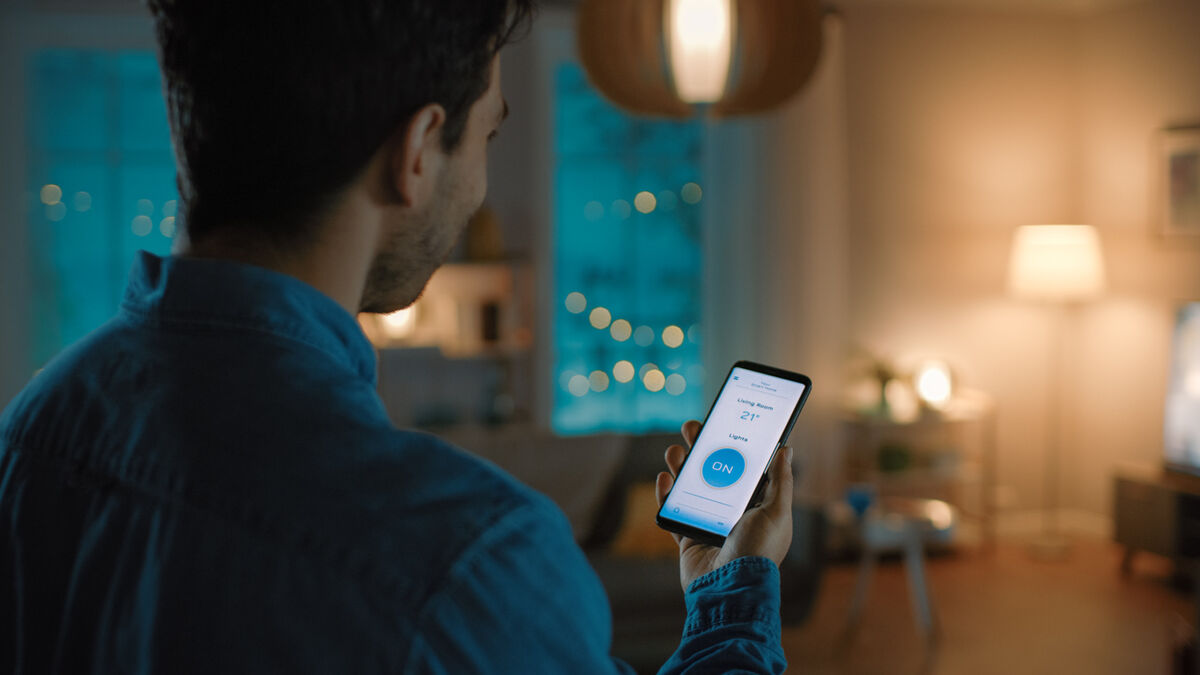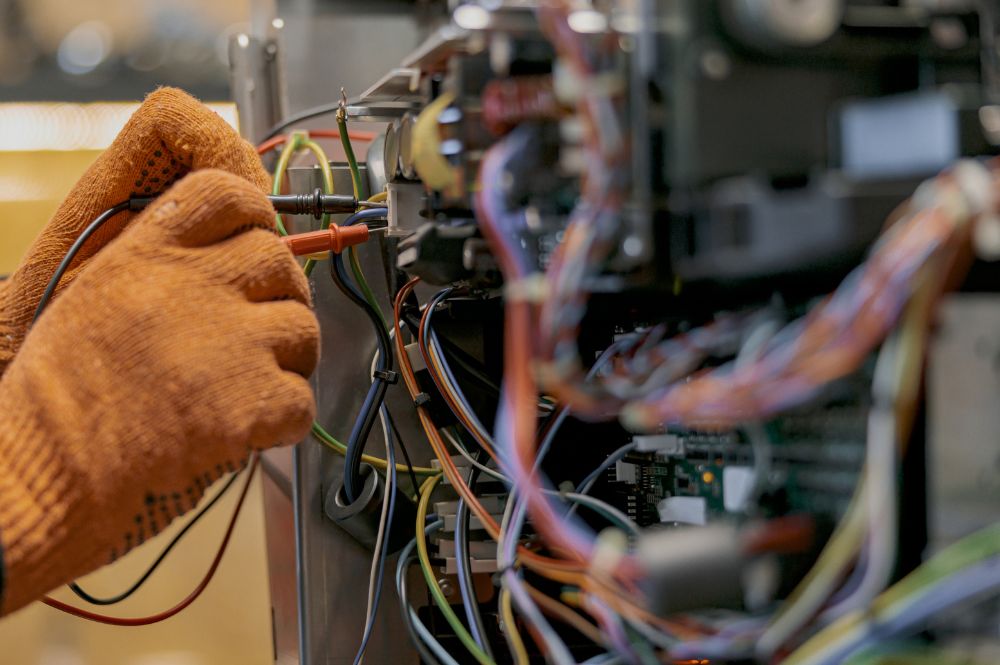How Does Smart Lighting Actually Work?
How Does Smart Lighting Actually Work? the modern home has undergone a massive transformation in recent years, all thanks to the advent of smart lighting. Gone are the days when lighting was as simple as flicking a switch. Today, smart lighting offers homeowners a level of control, customization, and energy efficiency that was once unimaginable. But have you ever wondered, how does smart lighting work exactly? How can a simple bulb be controlled by a smartphone, voice command, or even set to automatically adjust based on your activities? Let’s dive deep into the technology behind smart lighting, unraveling the intricate system that makes it so innovative.
The Basics of Smart Lighting: A Foundation for Understanding
To truly understand how smart lighting works, it’s essential to first grasp the basic concept behind it. At its core, smart lighting refers to lighting systems that can be controlled remotely through an app or voice assistant, rather than using traditional switches. These systems connect to the internet or your home network, allowing you to control them from virtually anywhere. Whether you’re on the couch, at the office, or even on vacation, the power to control your home’s lights is at your fingertips.
The key differentiator between regular lighting and smart lighting lies in its capability to connect with other devices, communicate over the network, and offer enhanced functionalities. Smart lights often come with features like dimming, color-changing, scheduling, and integration with other home automation systems like thermostats or security cameras.

Key Components of Smart Lighting
To understand how smart lighting works, it’s helpful to break down the various components involved:
- Smart Bulbs: These are the actual light sources that connect to your network. Smart bulbs typically use LED technology and can be controlled through a central hub, app, or voice assistant. They often come with additional features such as adjustable color temperature and color-changing capabilities.
- Hub or Bridge: Some smart lighting systems require a hub or bridge, which acts as the communication center between the bulbs and your devices. This central hub ensures that your smart bulbs are connected to your home network, making them accessible through your phone or voice assistant.
- App or Voice Assistants: The ability to control your lights from a smartphone app or via voice commands is one of the major benefits of smart lighting. Voice assistants like Amazon Alexa, Google Assistant, and Apple’s Siri can be integrated into the system, enabling hands-free operation.
- Sensors and Automation: Many smart lighting systems come with motion sensors, light sensors, and schedules that can automate the lighting process based on your preferences. For example, lights can turn on when you walk into a room or adjust their brightness based on the time of day.
The Technology Behind Smart Lighting: How Does It Work?
Now that we’ve outlined the basic components, let’s explore the underlying technology that makes smart lighting such a groundbreaking innovation. At the heart of smart lighting is communication technology, which enables the bulbs, hubs, and your devices to communicate with each other.
Here’s how smart lighting works in more technical detail:
1. Connectivity: Wi-Fi, Zigbee, and Bluetooth
For smart lighting to function, there needs to be some sort of communication protocol in place. Most smart lights connect to your home network using one of the following technologies:
- Wi-Fi: Some smart bulbs connect directly to your home’s Wi-Fi network. This eliminates the need for a separate hub, and you can control your lights through a smartphone app or voice assistant via the internet. Wi-Fi-based smart lights are easy to set up but may consume more power and bandwidth than other options.
- Zigbee: Zigbee is a wireless protocol designed specifically for smart home devices. Smart lights that use Zigbee require a hub to act as an intermediary. The hub communicates with the bulbs and connects them to the home network. Zigbee’s low energy consumption and high reliability make it a popular choice for smart lighting systems.
- Bluetooth: Bluetooth-enabled smart bulbs can be controlled directly from your phone without needing a hub. These lights are generally more limited in terms of range and features but offer a convenient and cost-effective solution for small setups.
2. Control Mechanisms: Apps, Voice Assistants, and Automation
Once your smart lighting system is connected, controlling it becomes a breeze. Most systems offer control through apps, voice commands, or automation:
- Smartphone Apps: The app is the central control interface for your smart lighting system. From the app, you can turn lights on and off, adjust brightness, change colors, create schedules, and more. The app communicates with the hub or the bulbs directly over Wi-Fi, Zigbee, or Bluetooth, depending on the system.
- Voice Assistants: Integration with voice assistants like Alexa, Google Assistant, and Siri allows for hands-free control of your lights. Using simple voice commands like “Alexa, dim the living room lights,” you can easily adjust your lighting. Voice assistants work by connecting to your hub or directly to your Wi-Fi-enabled bulbs, relaying commands through the internet.
- Automation: One of the most powerful features of smart lighting is automation. With the right app or hub, you can set up automated routines. For example, lights can automatically turn on at sunset or adjust to a preset brightness when you arrive home. Automation adds convenience and energy efficiency to your lighting system, as it can adapt to your lifestyle without requiring manual intervention.
3. Sensors and Smart Features: Enhancing Functionality
Many smart lighting systems come equipped with sensors that further enhance their functionality:
- Motion Sensors: Some smart bulbs have motion sensors that detect movement and turn the lights on or off automatically. This feature is particularly useful in hallways, bathrooms, or entryways where you don’t want to have to touch a switch every time you enter or exit a room.
- Ambient Light Sensors: Ambient light sensors detect the amount of natural light in a room and adjust the brightness of the smart lights accordingly. For instance, if the room is bright from sunlight, the lights will dim, saving energy. This feature is a great way to maintain the perfect lighting without any effort on your part.
- Color Temperature and Color Changing: Many smart lighting systems allow you to change the color temperature of the light, ranging from warm yellow tones to cool blue hues. This can be particularly helpful for setting the right mood—warmer tones for relaxation and cooler tones for work or focus. Some bulbs also offer full RGB color changing, allowing you to pick from millions of colors to create the perfect ambiance for any occasion.
4. Energy Efficiency and Cost Savings
A significant benefit of smart lighting is its energy efficiency. LED bulbs, which are commonly used in smart lighting systems, consume much less energy than traditional incandescent bulbs. Additionally, smart lighting allows for better control over when and how long the lights are on, minimizing energy waste.
With automation features like timers and motion sensors, smart lighting can ensure that lights are only on when needed, further reducing energy consumption. Over time, these features add up, helping homeowners save on electricity bills while contributing to a greener, more sustainable environment.
5. Integration with Smart Home Systems
The beauty of smart lighting lies in its ability to integrate with other smart home systems. Many smart lighting systems work in tandem with devices like smart thermostats, security cameras, and even home entertainment systems. This integration creates a more cohesive smart home experience.
For example, you can program your smart lighting to turn off when your security system is armed, or set your lights to gradually brighten as your thermostat adjusts the temperature in the morning. With seamless connectivity, smart lighting can work alongside other smart devices to create a home that adapts to your needs and routines.
The Future of Smart Lighting: What’s Next?
As we’ve explored, smart lighting is already a game-changer in home automation, offering flexibility, convenience, and energy efficiency. However, the technology continues to evolve, with even more exciting possibilities on the horizon.
From advanced AI algorithms that adapt lighting based on your habits to increased integration with other smart devices, the future of smart lighting promises even more control and personalization. Some manufacturers are also exploring new lighting technologies, such as circadian rhythm lighting, which adjusts the color temperature throughout the day to mimic natural sunlight and support better sleep patterns.
Smart lighting has transformed the way we interact with our home environment, offering more than just illumination. With the ability to control your lights from a smartphone, automate your routines, and save energy, smart lighting has become an essential component of modern home design. By understanding how smart lighting works, you can take full advantage of its capabilities, creating a home that is not only more efficient but also more comfortable and personalized. As technology continues to evolve, the future of smart lighting looks bright, offering even more innovative features and seamless integration into our everyday lives.







